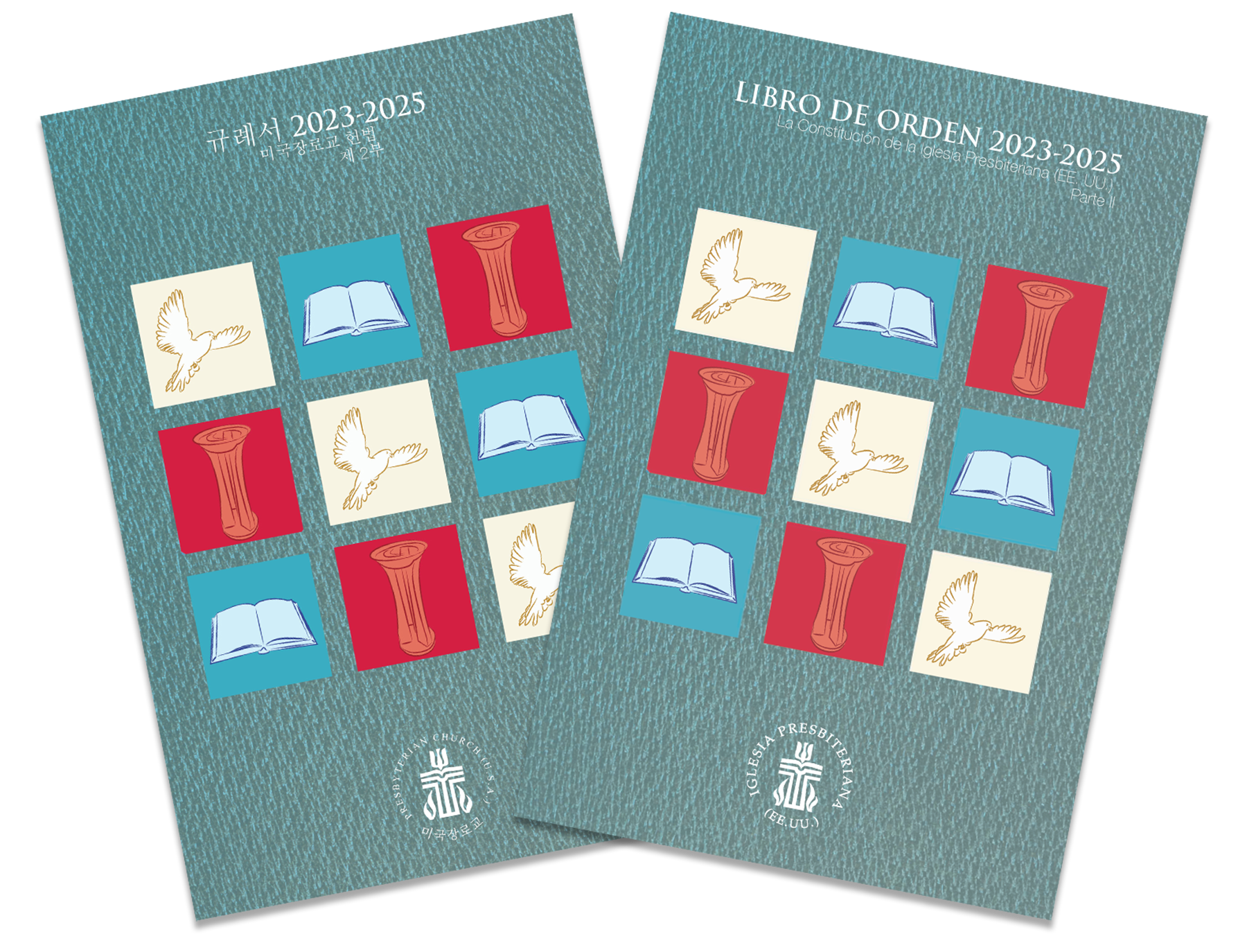

Bound copies of the Book of Order have been printed in Korean and Spanish, making the second part of the Presbyterian Church (U.S.A.) constitution available in book form for the first time in any language other than English.
In the past year, PC(USA)’s Global Language Resources and two teams of denominational translators — one for the Korean version, one the Spanish version — carried out extensive translating and revising work to produce the new texts.
Spanish- and Korean-speaking Presbyterians, congregations, mid councils, caucuses and other groups in the United States and abroad can now order the books through an Office of the General Assembly resource page or directly from the PC(USA) Store. The translated texts are also available from the OGA resource page as digital downloads, along with English versions of the 2023-2025 Book of Order in print layout, all-text, and large-print formats.
Laurie Griffith, Associate Director for Constitutional Interpretation in OGA, hailed the bound copies in Korean and Spanish as historic firsts for the PC(USA).
She said having the new translations is especially important because of the denomination’s large number of congregations that are primarily Korean- or Spanish-speaking, adding that it’s vital for the denomination to include those councils fully in its polity, just as it’s vital to serve other language and cultural communities. National church staff members are planning for new translations of the Book of Order in other languages in coming years. Previous translations are available on the resource page in Indonesian and Portuguese.
Griffith, whose work involves all things constitutional for the denomination, said she is “extremely grateful for the people who participated in the group efforts to create the translations.” If anyone has questions about interpretive differences between the translated texts and the authoritative English version, she asked to be contacted directly.
Griffith went on to explain how the two recent translation efforts were carried out by teams “in deep theological discussion about the meaning of different parts of the Book of Order,” ensuring that the constitution’s instruction, guidance and encouragement is accurately reflected in both languages. “For example, what is the best way to say ‘Christ is risen’ in Spanish or Korean? The teams’ process required a lot of back and forth.”
It took about a month for each part of the Book of Order to be translated and corrected by the team working in Korean. After each part was translated, it was shared with Korean-language Book of Order reviewers. A Book of Order Korean Translation Review Conference was held in Atlanta in March.
The Spanish-language translation was similarly exacting and involved its own group of denominational experts. Global Language Resources teamed up with church agencies, the Caucus Nacional Presbiteriano Hispano/a Latino/a and members of the denomination’s three Spanish-speaking presbyteries. It also convened a group editorial meeting in March, for three days in Aguadilla, Puerto Rico.
Soon after Griffith received the first bound copies in Korean, she mailed some to key interpretation participants, including five copies to Korea. She’s already heard back from one recipient that having the new translation in book format is “deeply meaningful.”
In addition to bound copies being more durable than loose-leaf versions, the work of laying out and printing the translations in book format shows the church’s commitment to living out an inclusive and dynamic faith. Each year, church resources are easier to find online. But printed copies of the constitution and other essential denominational texts remain an important part of the PC(USA) toolkit.
